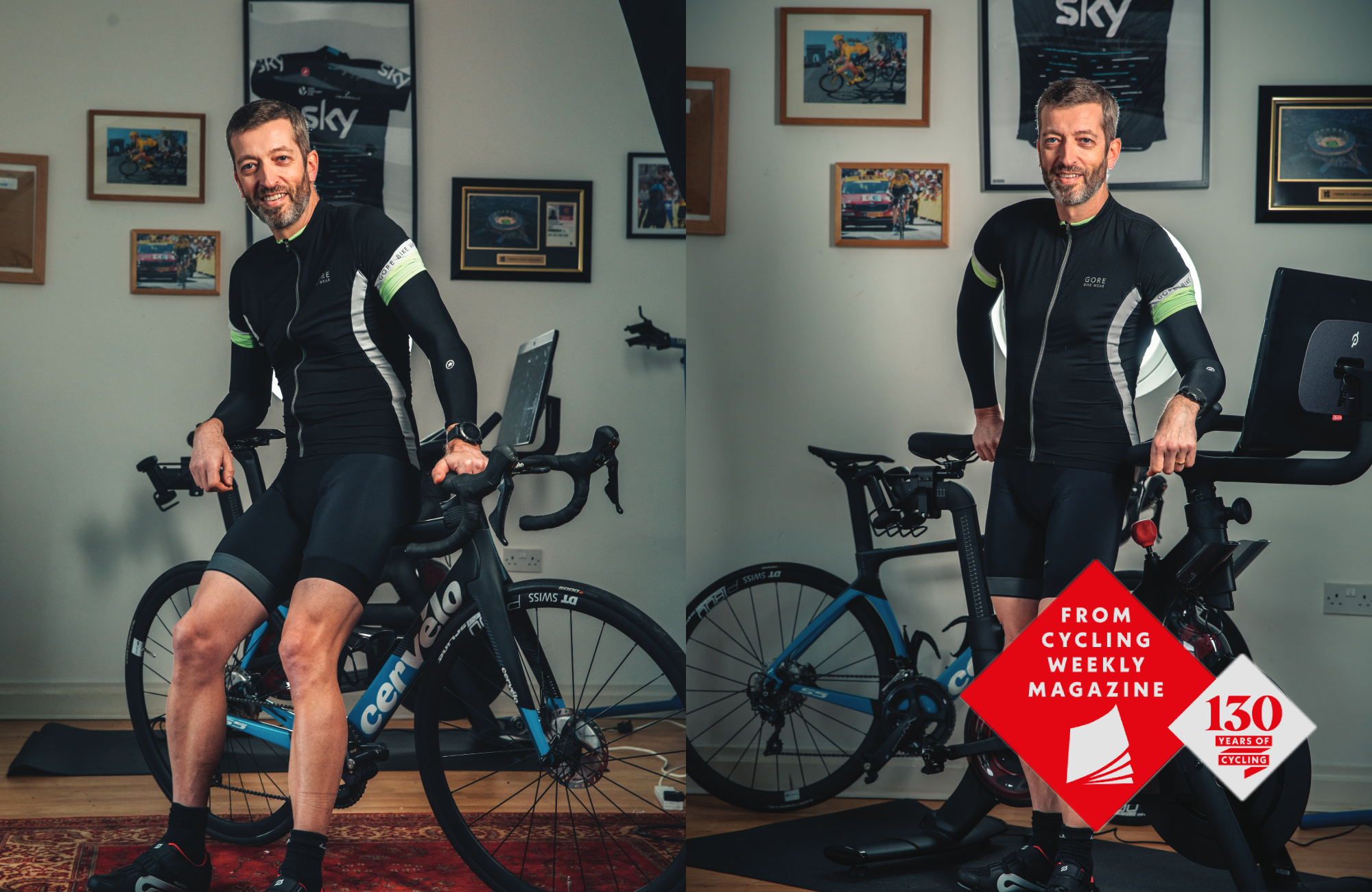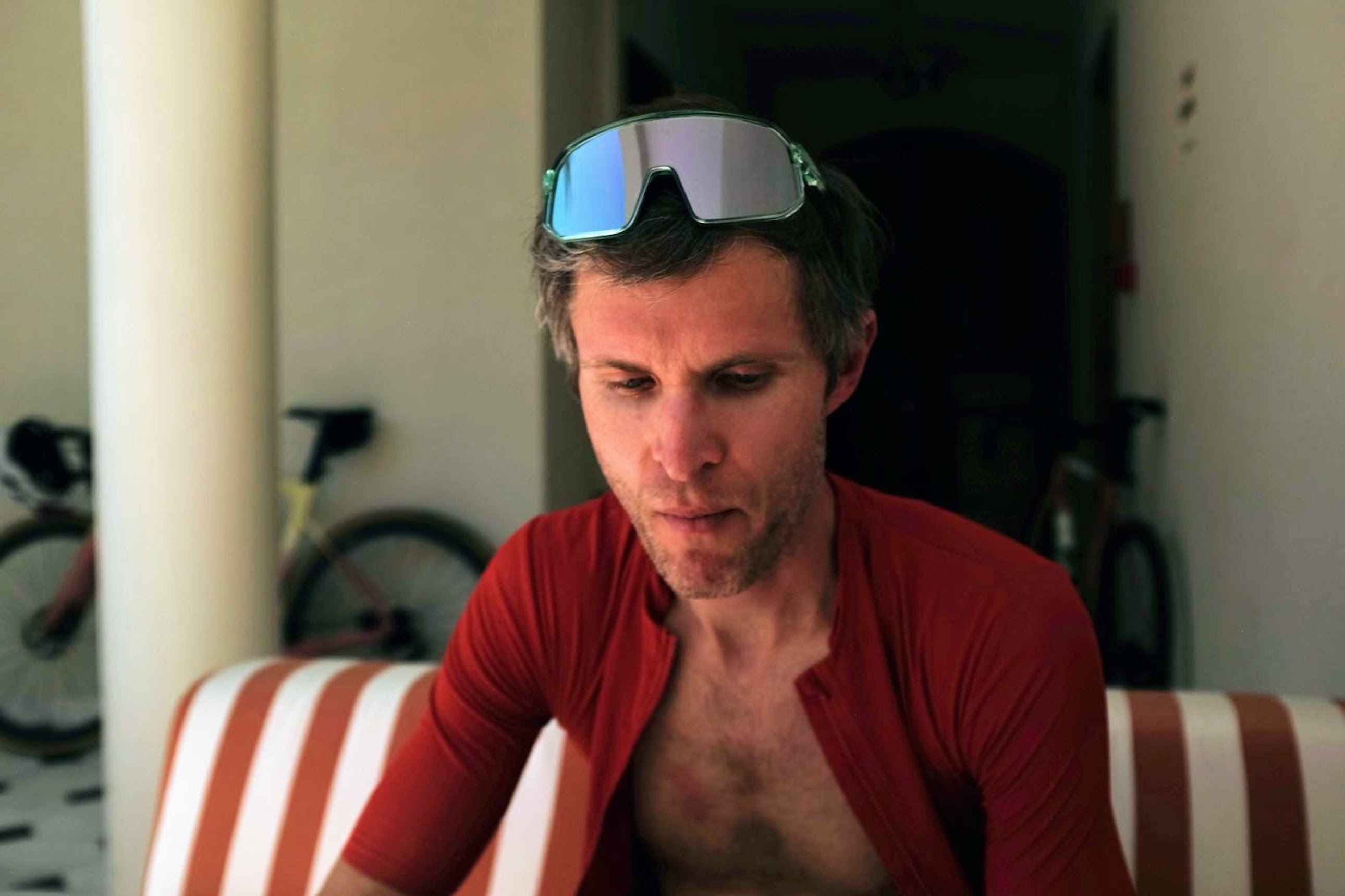‘Please take this thing seriously’: the cycling doctor who lost 90W from his FTP due to Covid-19
Sports medicine specialist Dr Laurence Gant understands better than most why cyclists should be cautious about Covid-19

Laurence Gant (Daniel Gould)

Having spent 20 years caring for the critically unwell, Dr Laurence Gant now specialises in looking after the obscenely fit. Team Sky riders were his main professional focus in 2018, before he transferred his talents to football as head of medical for Tottenham Hotspur’s youth academy. When Covid-19 arrived, it presented little threat to the teenage prodigies under Gant’s care. Besides, all games were off.
“When football shut down in March, I went back to work in the NHS,” he tells me by video call from his home in Woodford Green, London, recounting how he was tasked to care for a subset of seriously unwell patients for whom mechanical ventilation had been ruled out. For these patients, in the early days of the pandemic, there were no proven therapies. “It was horrible,” he says bluntly. “Everybody I looked after died.”
Once pressure on the NHS stabilised and football kicked off again, Gant returned to his regular job – and got back on his bike. Commuting to and from Spurs’ academy HQ, 40km a day, is the bedrock of the 54-year-old’s schedule, plus group rides at the weekend. He was steadily closing in on a target set the previous year, to hit an FTP of 300W. What was the motivation?
“My wife!” he laughs. “Her FTP might not beat mine, but she’s a hell of a lot quicker up hills.” He recounts being trounced by wife Cathy up French cols while on holiday in 2019. “I knew at that point I had to do something.”
>>> Subscriptions deals for Cycling Weekly magazine
The hard-pedalling doctor consolidated his fitness gains through autumn and was, because of his close involvement with aspiring Premier League footballers, being tested regularly for Covid-19.
All came back negative – until 21 December.
Get The Leadout Newsletter
The latest race content, interviews, features, reviews and expert buying guides, direct to your inbox!
“I got a positive swab,” he says, “and on reflection I’d probably had a very mild sore throat and felt tired for a day or two. Nothing dramatic, just a bit annoying.”
There was little to do but hunker down for a somewhat groggy Christmas in self-isolation. “It was on Christmas Eve that I lost my sense of smell,” he recalls. “Christmas Day lunch was a disaster – no smell, no taste, nothing. And then I started to feel unwell.”
Gant knew from first-hand experience that he was entering the ‘danger zone’, five to seven days after testing positive – either he would begin to recover or deteriorate steeply. “I developed a very high temperature, over 38ºC, which I couldn’t get down at all. At the same time, I was getting more breathless, more tired, and having night sweats.”
Being a doctor meant not a moment of blissful ignorance as his pulse oximeter spat out ever more ominous readings.
“I was waking up with oxygen saturation of 91 per cent,” he says. “The level for being admitted to hospital is around 92 per cent, but I was happy” – he pauses to choose a different word, “I felt OK to keep an eye on it myself.”
A mysterious effect of Covid-19 in patients like Gant has been tagged “happy hypoxia” – almost critically low oxygen levels but without the severe respiratory distress that would ordinarily be expected.
His condition was not improving, and Gant admits he was growing “quite worried” about the likelihood of further deterioration.
He decided to try a course of steroids in an attempt to calm his body’s overzealous immune response. Thankfully, it worked.
“Within 24 hours I was starting to feel better,” he says. “The fever broke and my oxygen saturation reached 94 per cent.”
He may have been out of danger by this point, but regaining his fitness would take far longer. For now, merely climbing a flight of stairs required recovery breaks. What first alerted me to Gant’s story was a tweet he posted on January 14: “Pre-Covid FTP 277W, post-Covid FTP 190W. Please take this thing seriously even if only to avoid screwing up your Strava times.”
When I mention this tweet, Gant draws attention to the known risk of heart muscle inflammation from Covid-19 and urges cyclists to be cautious in their return to training. “If you were seriously unwell with the virus, you should have an ECG and echocardiogram before doing any meaningful exercise. Once you do get back, you need to be sensible and start with a mix of walking and rest.”
Aside from the precipitous drop in FTP, Gant is seeing far higher heart rates in training and has reined in his efforts accordingly. Nonetheless he is determined to get back on terms with his wife before their planned LEJOG this summer. On the subject of returning to sociable riding as and when the time comes, what is his advice on staying safe?
>>> Cycling Weekly is available on your Smart phone, tablet and desktop
“Try to avoid walking or riding directly through the cloud of someone else’s breath,” cautions Gant. “Most people need to be more careful than they think – at least until the majority of the population has been vaccinated.”
Returning to cycling: ‘Take it step by step’
Sports physician Dr Philip Skiba (physfarm.com) provides guidelines on returning to training post-Covid:
I advocate a cautious, stepwise return to activity after Covid-19. The virus can have profound effects on the heart, lungs and circulatory systems, so no training should be attempted until the athlete is completely symptom-free – at least 10 days from symptom onset.
After that, I advise cyclists to begin with very easy riding (<70 per cent HRmax), gradually building from about 20 minutes to an hour over the course of seven to 10 days. From then on, limit increases in training load to 10 per cent per week until back to your previous level. If you experience any shortness of breath or chest pain, consult a doctor immediately.
This feature originally appeared in the print edition of Cycling Weekly, on sale in newsagents and supermarkets, priced £3.25.
You can subscribe through this link here.
That way you’ll never miss an issue.

Thank you for reading 20 articles this month* Join now for unlimited access
Enjoy your first month for just £1 / $1 / €1
*Read 5 free articles per month without a subscription

Join now for unlimited access
Try first month for just £1 / $1 / €1

David Bradford is features editor of Cycling Weekly (print edition). He has been writing and editing professionally for more than 15 years, and has published work in national newspapers and magazines including the Independent, the Guardian, the Times, the Irish Times, Vice.com and Runner’s World. Alongside his love of cycling, David is a long-distance runner with a marathon PB of two hours 28 minutes. Having been diagnosed with retinitis pigmentosa (RP) in 2006, he also writes about sight loss and hosts the podcast Ways of Not Seeing.
-
 'I'll take a top 10, that's alright in the end' - Fred Wright finishes best of British at Paris-Roubaix
'I'll take a top 10, that's alright in the end' - Fred Wright finishes best of British at Paris-RoubaixBahrain-Victorious rider came back from a mechanical on the Arenberg to place ninth
By Adam Becket Published
-
 'This is the furthest ride I've actually ever done' - Matthew Brennan lights up Paris-Roubaix at 19 years old
'This is the furthest ride I've actually ever done' - Matthew Brennan lights up Paris-Roubaix at 19 years oldThe day's youngest rider reflects on 'killer' Monument debut
By Tom Davidson Published